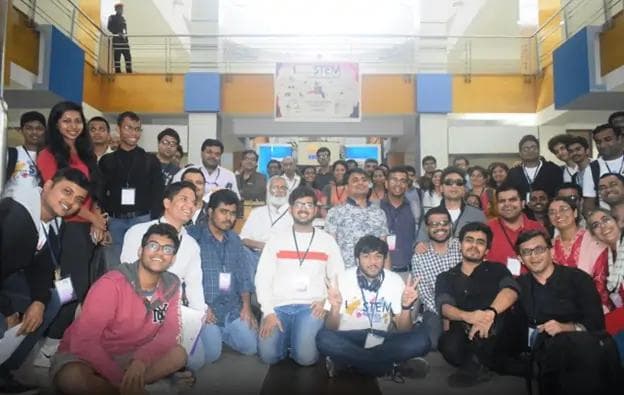Enhancing Safety and Security through AI-Powered Fraud Prevention
Enhancing Safety and Security through AI-Powered Fraud Prevention
Published by Wanda Rich
Posted on April 1, 2024

Published by Wanda Rich
Posted on April 1, 2024

Enhancing Safety and Security through AI-Powered Fraud Prevention
There are many concerns in the modern banking world. Two of the biggest of these are the security of customer transactions and the safety of consumer data.
To address these concerns and instill a sense of trust, banks can leverage AI-driven fraud prevention mechanisms that encompass the customer experience. These mechanisms have the potential to combine cutting-edge technologies with seamless customer interactions.
The result is a streamlined customer experience that thwarts fraudulent activities while improving customer convenience. This use of AI in business, including banking, isn’t pure theory, either.
It is already gaining traction. According to EY, 65% of CEOs consider AI a force for good, and 71% of executives are integrating AI into their approach to transactions.
Here are seven ways banks can utilize AI to enhance and secure the customer experience.
1. Behavioral Biometrics
AI can create unique customer profiles that promptly identify deviations from normal user behavior. This can take place in a variety of activities, from typing patterns to swiping gestures.
Whenever a common pattern changes unexpectedly, AI can use that event to flag potentially fraudulent activities. Artificial intelligence has the capability to scan for these aberrations in real time. By incorporating this into the banking security process, banks add extra protection to their customers’ interactions.
2. Real-Time Transaction Monitoring
AI-powered algorithms can also scrutinize transactions as they take place. Computer-powered programs have the capability of assessing each transaction on an individual basis. This allows them to analyze every interaction for unusual behavior.
This includes evaluating the amounts, frequency, and geographic locations of various electronic events. For instance, if a bank transaction takes place in another country or is ten times larger than usual, AI can detect the anomaly. Not only that. It can do so in a fraction of the time it would take a human.
When a transaction appears suspicious, AI can trigger immediate alerts for further investigation. This ensures banks can address customer concerns related to potential fraud promptly.
3. Biometric Authentication
Biometric authentication methods are yet another powerful use of the blossoming capabilities of AI. These include a variety of ways to validate identities, such as facial recognition or fingerprint scanning. These ensure that customers’ identities are verified before any sensitive information enters the picture.
When AI is able to monitor these identity measures, it mitigates the risk of impersonation and unauthorized access. This dramatically increases the security of financial transactions without the need for excessive investment in human intervention.
4. Anomaly Detection in Customer Interactions
AI can also analyze customer interactions to learn more about consumers within the financial industry. They can study behaviors and interactions across different communication channels and use this information to understand how customers interact and behave.
This doesn’t just provide usable data for marketing and customer service. It also allows financial institutions to enhance security by identifying discrepancies in language, tone, and communication style.
By detecting unusual patterns, AI can highlight potential social engineering attempts or phishing attacks. This protects customers from inadvertently sharing confidential information or otherwise falling victim to anomalous and hostile digital interactions.
5. Predictive Analytics for Fraud Identification
There is a growing number of fraudulent interactions taking place within the financial sector. These include mismanaged accounts that include devious behaviors, such as wrongful foreclosure or illegal repossessions of vehicles to surprise fees and charges.
AI’s predictive capabilities can help banks anticipate potentially fraudulent scenarios. AI can analyze historical data and use that information to identify trends and patterns associated with previous fraudulent activities. This gives banks the ability to proactively address emerging fraudulent threats so that they can take preventive measures to avoid them occurring in the future.
6. Secure Document Verification
Verifying documentation is a time-consuming activity. This makes AI a perfect candidate to supercharge document verification systems. This doesn’t just authenticate customer-provided documents quickly. It is yet another way that computerization can provide near-instantaneous protection.
This is particularly useful during the complaints resolution process. When customers need to share sensitive documents to validate or explain issues and concerns, AI can detect forged or altered documents. This ensures that banks only process legitimate information with each interaction.
7. Multi-Channel Fraud Monitoring
As already touched on, traditional fraud prevention is an initiative that requires a lot of resources. Particularly when addressed by human intervention, it can take up copious amounts of time and effort. AI can remove this concern through its ability to provide comprehensive, multi-channel monitoring — and it can do so at a fraction of the human equivalent.
Along with being efficient and affordable, AI provides a unified view of customer interactions across various channels. This enables banks to detect inconsistencies or discrepancies from a variety of different directions. Each of these could indicate fraud attempts. This multi-channel approach ensures that fraud prevention encompasses the entire customer journey, from initial awareness to customer support.
Using AI to Enhance Safety and Security
For the banking world, the future lies in the direction of incorporating AI-powered fraud prevention mechanisms into the end-to-end customer experience. This creates an unparalleled sense of safety and enhances security among banking customers.
By seamlessly integrating fraud prevention into the process of handling outward-facing interactions, banks not only protect their customers’ interests. They also enhance their members’ overall trust and confidence in each institution.
It is a powerful, proactive approach to financial activity that demonstrates a commitment to customer security and contributes to a positive and secure banking experience.
Explore more articles in the Technology category











